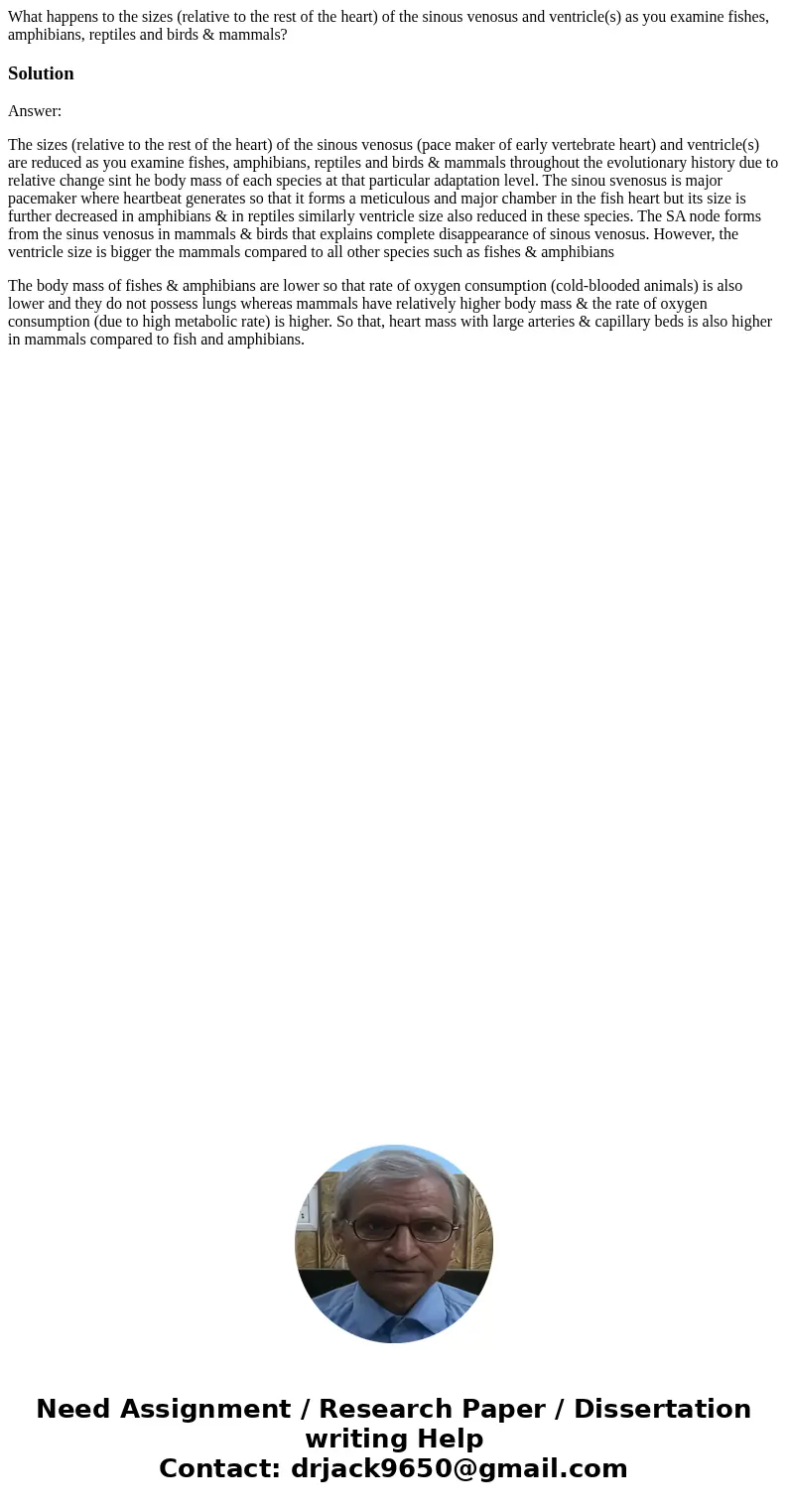What happens to the sizes relative to the rest of the heart
What happens to the sizes (relative to the rest of the heart) of the sinous venosus and ventricle(s) as you examine fishes, amphibians, reptiles and birds & mammals?
Solution
Answer:
The sizes (relative to the rest of the heart) of the sinous venosus (pace maker of early vertebrate heart) and ventricle(s) are reduced as you examine fishes, amphibians, reptiles and birds & mammals throughout the evolutionary history due to relative change sint he body mass of each species at that particular adaptation level. The sinou svenosus is major pacemaker where heartbeat generates so that it forms a meticulous and major chamber in the fish heart but its size is further decreased in amphibians & in reptiles similarly ventricle size also reduced in these species. The SA node forms from the sinus venosus in mammals & birds that explains complete disappearance of sinous venosus. However, the ventricle size is bigger the mammals compared to all other species such as fishes & amphibians
The body mass of fishes & amphibians are lower so that rate of oxygen consumption (cold-blooded animals) is also lower and they do not possess lungs whereas mammals have relatively higher body mass & the rate of oxygen consumption (due to high metabolic rate) is higher. So that, heart mass with large arteries & capillary beds is also higher in mammals compared to fish and amphibians.

 Homework Sourse
Homework Sourse